Effective mapping is an invaluable asset in the logistics and transportation industry. A well-crafted map not only conveys information but also tells a compelling story, transcending traditional spreadsheets and verbal communication. Below are some favorite mapping tools that can enhance your next project.
As visual learners make up about 65% of the population, there’s a good chance that the audience you’re presenting to next will appreciate a good piece of cartographic art.
Google My Maps
Google My Maps elevates standard Google Maps by allowing users to create personalized maps with color-coded pushpins and additional information. This tool is ideal for various applications, including vacation planning, business location mapping, or sharing delivery routes. It integrates seamlessly with Google Sheets for easy updates and collaboration.
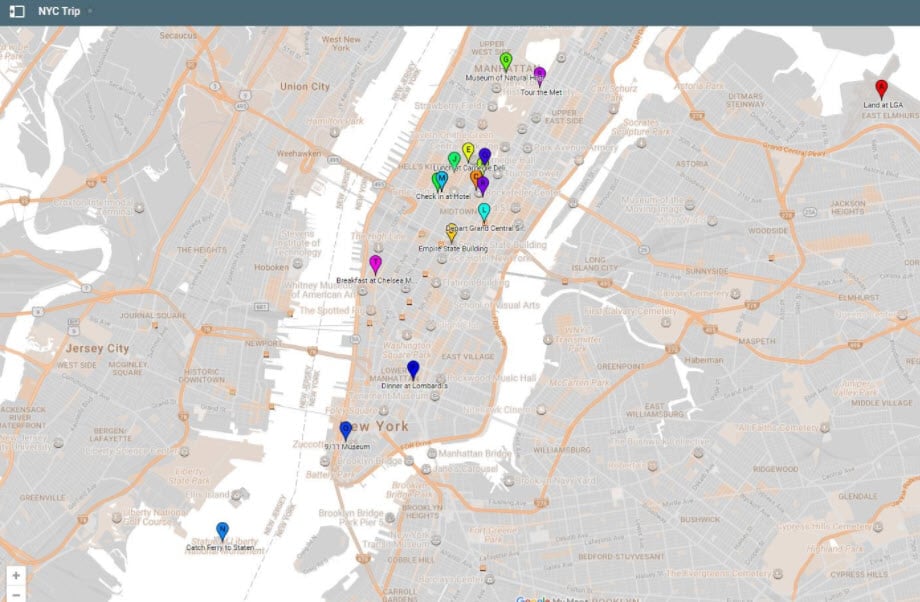
MultiPlottr
For quick visualizations, MultiPlottr allows users to plot multiple addresses rapidly. Simply paste your addresses into the tool, click “Plot,” and you’re done. It’s perfect for creating quick visuals for presentations without sacrificing quality.
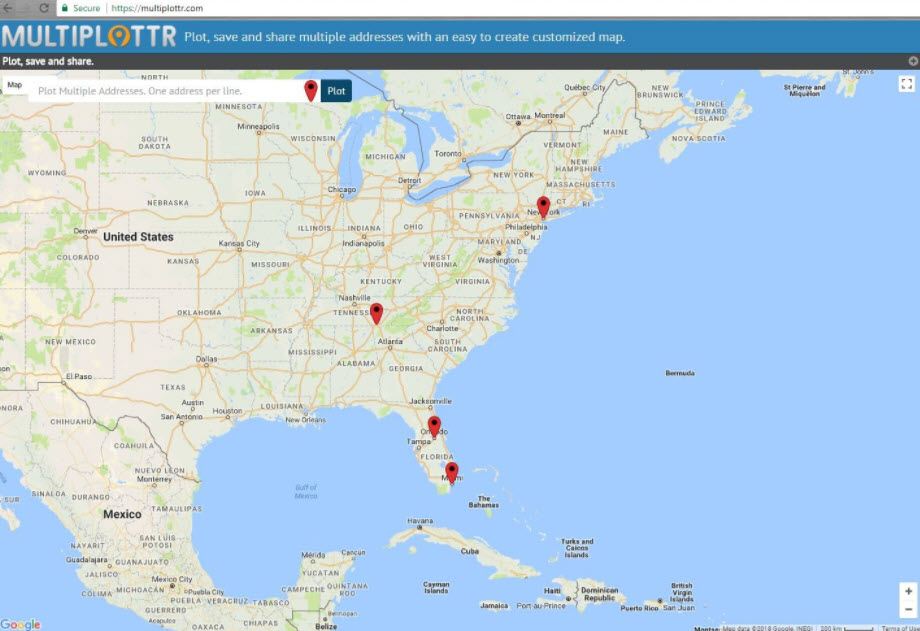
Excel 3D Maps
Excel 3D Maps, available with Office 365, is a powerful tool for visualizing geospatial data directly within Excel. Users can create heat maps, bar charts, or time-based growth charts with relative ease. Advanced users can layer shapefiles to delineate specific geographic boundaries, enhancing their data storytelling capabilities.
Additionally, there are many other ways to take 3D Maps to the next level. For example, if you wanted to outline a three-digit zip boundary, download and layer in shapefiles onto your map. This requires a little more technical expertise, but it’s something that you can learn within 1-2 hours with a few Google searches and trial and error within the tool.
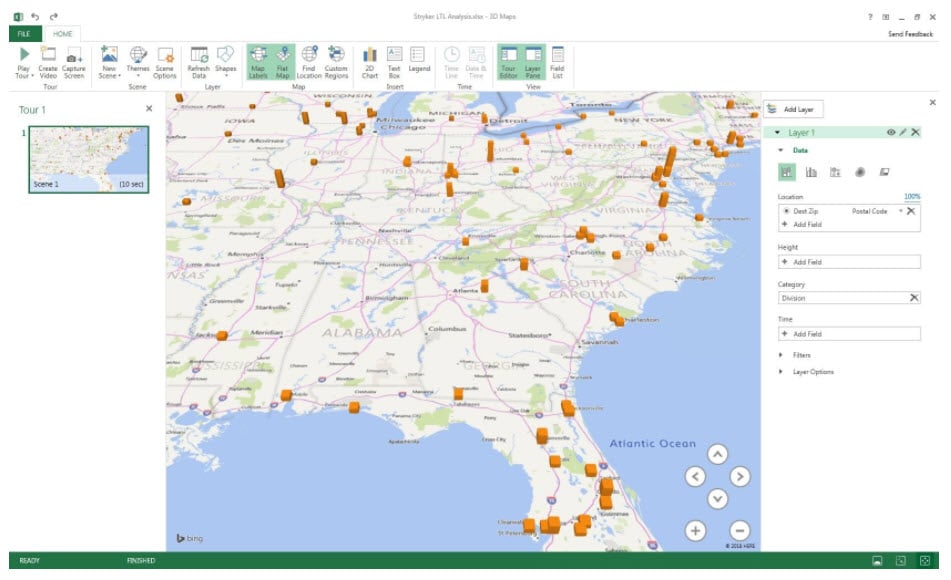
3- Digit Zip Map
There are roughly 43,000 zip codes in the U.S., and the list grows each year. Therefore, most within the transportation industry choose to look at the 929 three-digit zips instead as it easier to digest information. While it’s fairly easy to run a pivot table or report on volume to each of the three digit zips, it’s often harder to visualize the shape or actual geographical zone of a 3-digit zip territory as it encompasses all zip codes with that three-digit prefix. The tool allows you to do exactly that. Type it in, press ‘Map 3 Digit Zip’ and you know the boundaries immediately. Also, note that it allows you to enter in multiple 3-digit zip zones.
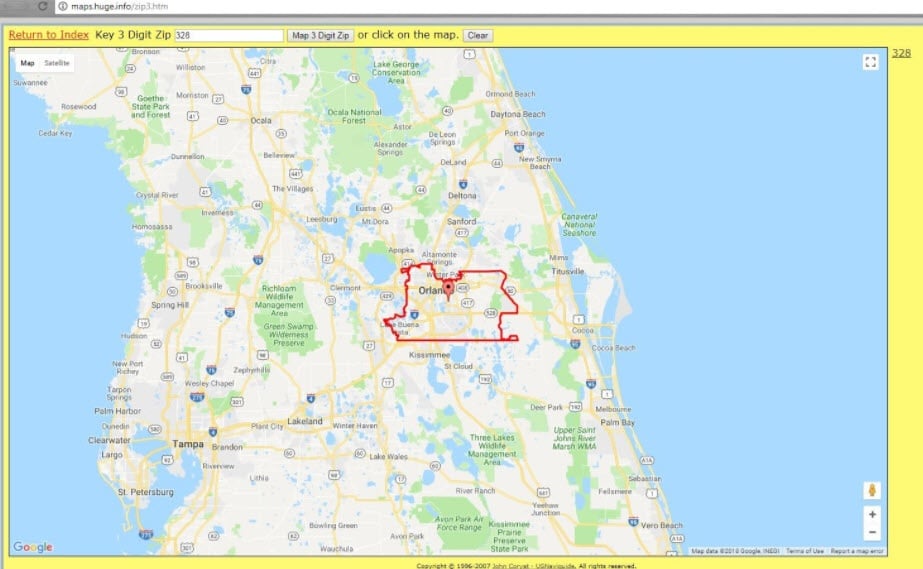
OptiMap
Suppose you have 25 addresses to visit and need to find the optimal way to do so. OptiMap allows you to do just that. Simply bulk add (or type in) addresses and press ‘Find!’, the ‘Calculate.’ Google Maps caps out at ten addresses, as do most other mapping engines like Bing and Mapquest. It’s a great small-scale optimization tool that you can use for free.
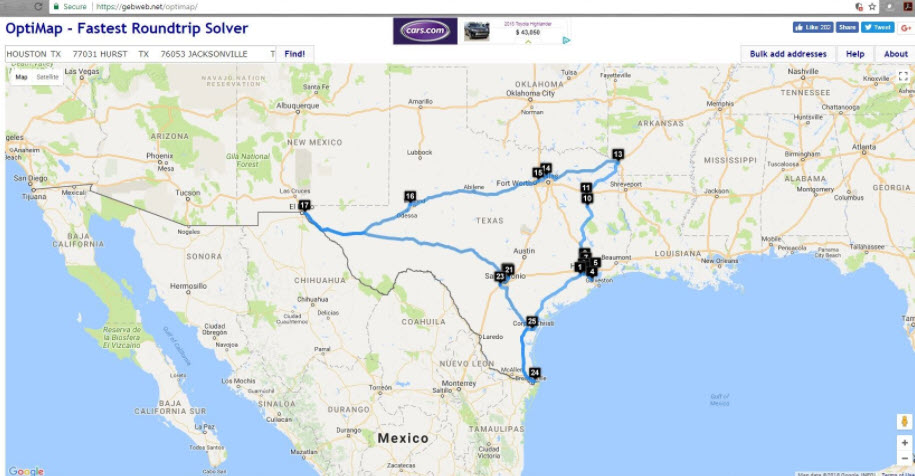
Point to Point Distance Calculator
Suppose you need to know what cities are within 200 miles of say, Kansas City. This tool can quickly help as it operates on the premise of clicking on the origin, then on the destination, with a mileage output. It’s much faster than a Google Map trial and error session, but note the big disclaimer here – it uses the Great Circle Formula (as the crow flies) and will vary from actual driving distances produced by Google Maps. It’s a great high-level tool to get a feel for mileages from a certain origin location.
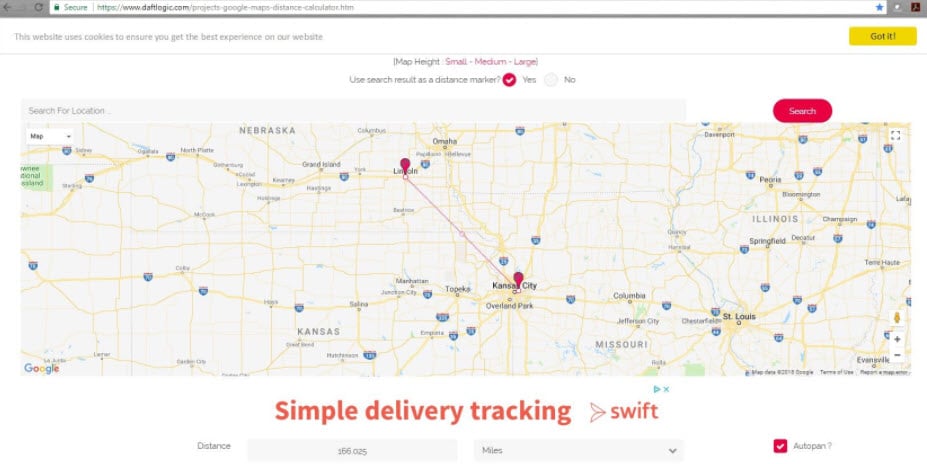
Batch Geocoding
Need to convert addresses to latitude and longitude coordinates? If you’re looking to batch upload and download lat/long coordinates and don’t have an in-house tool to do so at your company, this is a great free tool to do so. Over the years, there have been a number of batch geo-code upload/download tools pop up, but I like this one – it’s simple and straight-forward to use, plotting each point on the map in addition to producing the data you need.
Tableau Public
By far the most challenging and complex tool to learn in this group of 8, you can produce beautiful flow maps that will blow away your audience. Tableau Public is a free tool (not meant for commercial use), but if you’ve got some interesting mapping projects to undertake on the side, it’s a wonderful tool with the most flexibility that I’ve found in any free-to-use tool on the net. With the right address and geo (lat/long) information, you can seamlessly put together dot plots, shaded zone maps, or flow maps.

To Sum It All Up
These tools represent just a fraction of what’s available for logistics professionals looking to enhance their mapping capabilities. They can significantly improve how you visualize and communicate complex data. If you’re seeking more advanced solutions beyond these free tools, consider exploring resources like our Network Design Study that Unveiled $10m in Savings.
Discover More
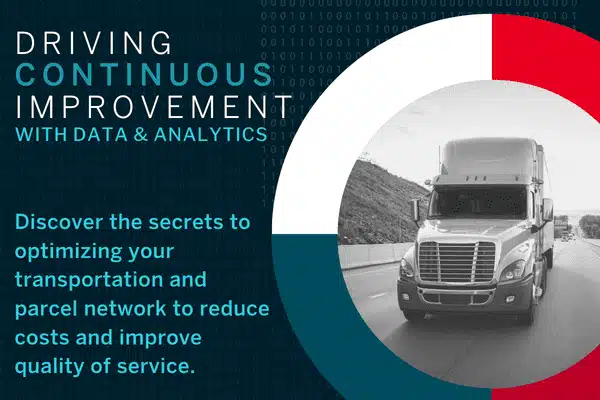
Transportation costs aren’t going down, so how can you reduce yours? Using a continuous improvement model can improve your margins and customer experience. Our eBook covers the proven ways to drive incremental improvements in your transportation bottom line.
